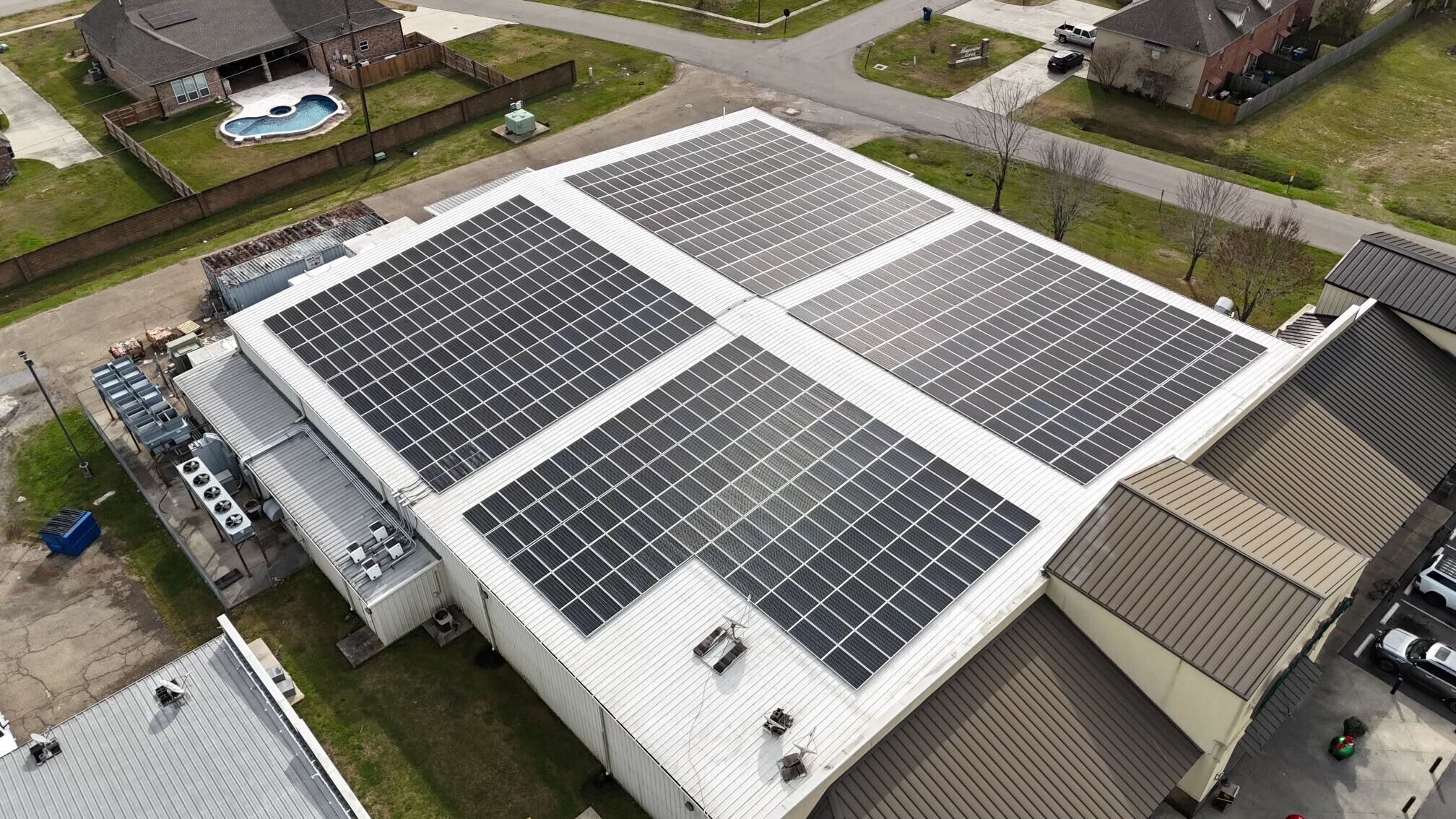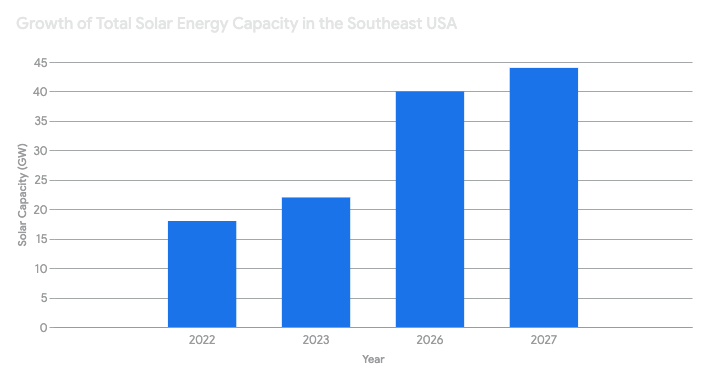
The Southeast’s Solar Advantage
The Southeast United States is experiencing a solar revolution. With states like Texas, Florida, Louisiana, and Tennessee seeing dramatic increases in solar adoption, commercial, and industrial property owners are discovering that what was once considered an alternative energy source has become a mainstream business decision. At The Next Energy Technology, we’ve helped hundreds of businesses across the Southeast harness the power of the sun—and the financial benefits that come with it.
But why exactly is solar energy becoming such a compelling choice for commercial and industrial buildings in this region? Let’s explore the unique advantages the Southeast offers for solar investments and how businesses are capitalizing on them.
The Southeast Solar Landscape: More Promising Than You Think
Many business owners are surprised to learn that the Southeast United States offers exceptional conditions for solar energy production. Here’s why:
Abundant Sunshine Year-Round
While states like California and Arizona are known for their solar potential, the Southeast actually enjoys:
– More consistent sunshine throughout the year than many northern regions
– Lower seasonal variation in solar production
– 2,000-2,800 hours of sunlight annually across most of the region
– Higher summer production when electricity demand (and prices) typically peak due to cooling needs
Florida, aptly named the Sunshine State, averages over 230 sunny days per year, while even Tennessee receives approximately 207 days of sunshine, more than enough to generate significant solar energy.
Decreasing Installation Costs
The economics have shifted dramatically in favor of solar investment in recent years:
– Solar panel costs have declined by over 70% in the past decade
– Installation costs in the Southeast are now 20-30% lower than in 2015
– Commercial-scale installations benefit from economies of scale, further reducing per-watt costs- Local incentives in states like Texas and Florida have made solar increasingly affordable

Spacious Commercial Rooftops
The architectural landscape of the Southeast presents ideal opportunities:
– Large, flat roofs common in commercial and industrial buildings provide optimal installation space
– Lower land costs than the Northeast or West Coast make ground-mounted systems viable for larger operations
– Minimal snow load requirements allow for lighter, more cost-effective mounting systems
Financial Benefits: Beyond Environmental Considerations
While environmental benefits are significant, the decision to invest in solar for commercial and industrial buildings is increasingly driven by compelling financial factors:
Dramatic Reduction in Operating Costs
Energy expenses represent a substantial portion of operating costs for commercial and industrial facilities. Solar installation directly impacts these costs:
– 30-60% reduction in electricity costs is typical for properly sized commercial systems
– Predictable energy expenses for 25+ years, creating budget stability
– Protection against utility rate increases, which have averaged 2-3% annually in most southeastern states
A 250kW system on a typical manufacturing facility in Georgia could save approximately $35,000-$45,000 in annual electricity costs—funds that go directly to the bottom line.
Attractive Tax Incentives and Depreciation
The federal Investment Tax Credit (ITC) remains one of the most significant financial incentives:
– 30% federal tax credit on the total system cost
– Accelerated depreciation (MACRS) allowing businesses to depreciate the system over just 5 years
– 100% bonus depreciation options available through 2025
– State-specific incentives that vary across southeastern states
For a $500,000 commercial solar installation, these incentives can reduce the effective cost to approximately $290,000-$325,000 after accounting for tax benefits.
Enhanced Property Value
Commercial real estate with solar installations commands premium values:
– Buildings with solar typically see a 3-8% increase in property value
– Lower operating costs make properties more attractive to potential tenants or buyers
– LEED certification points are easier to achieve with on-site renewable energy generation
– Higher net operating income (NOI) resulting from reduced utility expenses
Industry-Specific Advantages in the Southeast
Different sectors benefit from solar in unique ways across the Southeast region:
Manufacturing Facilities
The manufacturing sector, which has a strong presence in states like South Carolina, Tennessee, and Alabama, benefits particularly from solar energy:
– High daytime energy consumption aligns perfectly with peak solar production
– Consistent weekly usage patterns simplify system sizing and ROI calculations
– Energy-intensive processes mean greater absolute savings
– Sustainability goals increasingly important in supply chain requirements from larger customers
Warehousing and Distribution Centers
The logistics industry, booming across the Southeast, presents ideal conditions for solar adoption:
- Large, unobstructed roof areas perfect for expansive solar arrays
- Relatively low energy usage per square foot means a higher percentage of needs can be met by solar
- Growing e-commerce sector driving warehouse construction with solar-ready designs
- Strategic location along major transportation corridors in Florida, Georgia, and Tennessee
Office Buildings and Corporate Campuses
Commercial office spaces in growing southeastern metropolitan areas like Atlanta, Nashville, and Charlotte gain multiple benefits:
- Daytime occupancy aligned with solar production hours
- Visible commitment to sustainability enhances corporate image
- Tenant attraction and retention improved with green buildings
- Reduced HVAC costs, as rooftop panels actually help insulate buildings and reduce cooling loads
Overcoming Common Concerns for Southeast Businesses
Despite the clear advantages, some commercial and industrial property owners still hesitate. Let’s address the most common concerns we hear from southeastern businesses:
“What About Hurricane Resistance?”
Coastal regions in the Southeast do face hurricane risks, but modern solar installations are engineered for resilience:
- Wind ratings of 140+ mph for quality systems properly installed
- Structural engineering specific to southeastern weather patterns
- Insurance coverage available specifically for solar systems
- Rapid restoration capabilities from experienced solar maintenance providers
In fact, many systems installed by The Next Energy Technology across Florida’s coast have withstood multiple major hurricanes with minimal or no damage.
“Will It Really Work During Hot, Humid Summers?”
The Southeast’s notorious summer heat actually impacts solar performance less than many assume:
- While efficiency decreases slightly at very high temperatures, overall production increases with longer, sunnier summer days
- Modern panel technology has significantly improved heat tolerance
- Elevated mounting systems allow airflow that reduces operating temperatures
- Annual production calculations already factor in seasonal temperature variations
“How Long Until I See ROI?”
Return on investment timing varies by specific location, usage patterns, and incentives, but:
- Most commercial systems in the Southeast achieve payback periods of 4-7 years
- With 25+ year system lifespans, this means 18+ years of pure profit
- Financing options including PPAs and leasing can eliminate upfront costs entirely
- Utility incentives in some southeastern markets can further accelerate ROI
Getting Started with Commercial Solar in the Southeast
If you’re considering solar for your commercial or industrial building in the Southeast, here’s a strategic approach:
- Start with an energy audit to understand your current consumption patterns
- Request a site assessment from a commercial solar provider with southeastern experience
- Review financing options including cash purchase, loans, leases, and power purchase agreements
- Investigate utility-specific programs in your location that may offer additional incentives
- Consider phased implementation if budget constraints are a concern
A Bright Future for Southeast Commercial Solar
The convergence of abundant sunshine, decreased technology costs, favorable incentives, and rising electricity rates has created an unprecedented opportunity for commercial and industrial buildings across the Southeast United States. Solar energy is no longer simply an environmental choice—it’s a strategic business decision with compelling financial benefits.
As southeastern states continue to embrace renewable energy through updated policies and grid modernization, commercial solar adoption will only accelerate. Forward-thinking businesses are already positioning themselves to benefit from this transition, securing lower operating costs and enhanced property values for decades to come.
